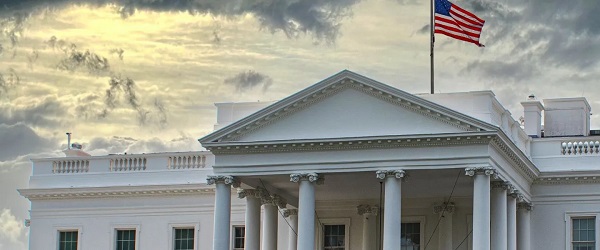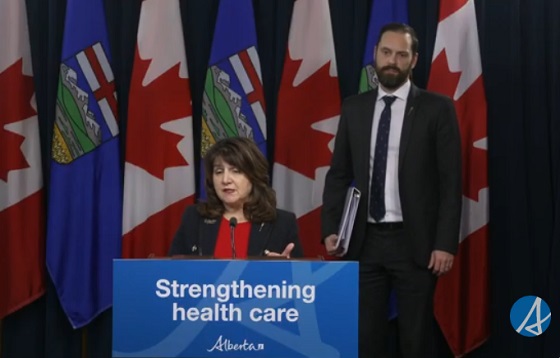Economy
Today’s federal government—massive spending growth and epic betting
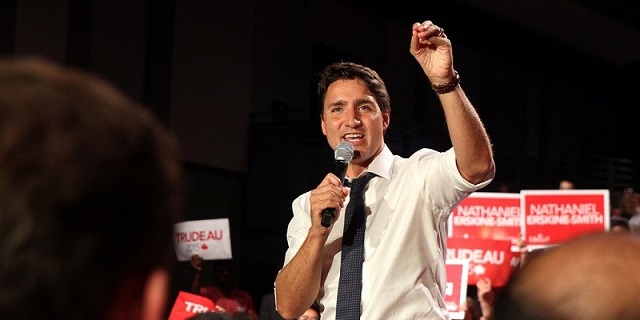
From the Fraser Institute
One can legitimately ask whether the federal government has simply grown too big, complex and unwieldy to be managed at all
The Trudeau government’s 2024 budget landed with a thud, evoking little enthusiasm and drawing spirited criticism from business leaders, investors, provincial premiers and (of course) the opposition parties. Several elements of the budget have garnered outsized attention, notably the pledge to run endless deficits, the imposition of higher capital gains taxes, and various new programs and policy initiatives intended to address Canada’s housing crisis.
But the budget includes a few eye-catching data points that have been downplayed in the subsequent political and media commentary.
One is the sheer size of the government. The just-completed fiscal year marked a milestone, as Ottawa’s total spending reached half a trillion dollars ($498 billion, to be exact, excluding “actuarial losses”). According to the budget, the government will spend $95 billion more in 2024-25 than it planned only three years ago, underscoring the torrid pace of spending growth under Prime Minister Trudeau.
One can legitimately ask whether the federal government has simply grown too big, complex and unwieldy to be managed at all, even if we assume the politicians in charge truly care about sound management. How many parliamentarians—or even cabinet ministers—have a sufficient understanding of the sprawling federal apparatus to provide meaningful oversight of the vast sums Ottawa is now spending?
The ArriveCAN scandal and chronic problems with defence procurement are well-known, but how good a job is the government doing with routine expenditure programs and the delivery of services to Canadians? The auditor general and the Parliamentary Budget Officer provide useful insights on these questions, but only in a selective way. Parliament itself tends to focus on things other than financial oversight, such as the daily theatre of Question Period and other topics conducive to quick hits on social media. Parliament isn’t particularly effective at holding the government to account for its overall expenditures, even though that ranks among its most important responsibilities.
A second data point from the budget concerns the fast-rising price tag for what the federal government classifies as “elderly benefits.” Consisting mainly of Old Age Security and the Guaranteed Income Supplement, these programs are set to absorb $81 billion of federal tax dollars this year and $90 billion by 2026-27, compared to $69 billion just two years ago. Ottawa now spends substantially more on income transfers to seniors than it collects in GST revenues. At some point, a future government may find it necessary to reform elderly benefit programs to slow the relentless cost escalation.
Finally, the budget provides additional details on the Trudeau government’s epic bet that massive taxpayer-financed subsidies will kickstart the establishment of a major, commercially successful battery and electric vehicle manufacturing “supply chain” in Canada. The government pledges to allocate “over $160 billion” to pay for its net-zero economic plan, including $93 billion in subsidies and incentives for battery, EV and other “clean” industries through 2034-35. This spending, the government insists, will “crowd in more private investment, securing Canada’s leadership” in the clean economy.
To say this is a high-risk industrial development strategy is an understatement. Canada is grappling with an economy-wide crisis of lagging business investment and stagnant productivity. Faced with this, the government has chosen to direct hitherto unimaginable sums to support industries that make up a relatively small slice of the economy. Even if the plan succeeds, it won’t do much to address the bigger problems of weak private-sector investment and slumping productivity growth.
Author:
Alberta
Carney forces Alberta to pay a steep price for the West Coast Pipeline MOU
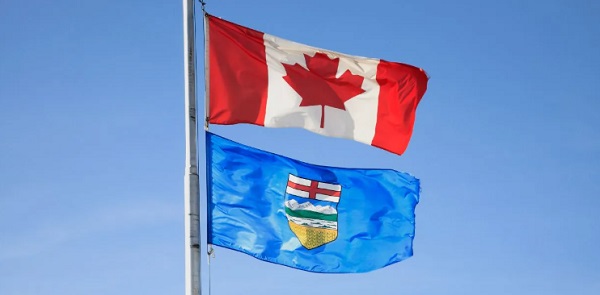
From the Fraser Institute
The stiffer carbon tax will make Alberta’s oil sector more expensive and thus less competitive at a time when many analysts expect a surge in oil production. The costs of mandated carbon capture will similarly increase costs in the oilsands and make the province less cost competitive.
As we enter the final days of 2025, a “deal” has been struck between Carney government and the Alberta government over the province’s ability to produce and interprovincially transport its massive oil reserves (the world’s 4th-largest). The agreement is a step forward and likely a net positive for Alberta and its citizens. However, it’s not a second- or even third-best option, but rather a fourth-best option.
The agreement is deeply rooted in the development of a particular technology—the Pathways carbon capture, utilization and storage (CCUS) project, in exchange for relief from the counterproductive regulations and rules put in place by the Trudeau government. That relief, however, is attached to a requirement that Alberta commit to significant spending and support for Ottawa’s activist industrial policies. Also, on the critical issue of a new pipeline from Alberta to British Columbia’s coast, there are commitments but nothing approaching a guarantee.
Specifically, the agreement—or Memorandum of Understanding (MOU)—between the two parties gives Alberta exemptions from certain federal environmental laws and offers the prospect of a potential pathway to a new oil pipeline to the B.C. coast. The federal cap on greenhouse gas (GHG) emissions from the oil and gas sector will not be instituted; Alberta will be exempt from the federal “Clean Electricity Regulations”; a path to a million-barrel-per day pipeline to the BC coast for export to Asia will be facilitated and established as a priority of both governments, and the B.C. tanker ban may be adjusted to allow for limited oil transportation. Alberta’s energy sector will also likely gain some relief from the “greenwashing” speech controls emplaced by the Trudeau government.
In exchange, Alberta has agreed to implement a stricter (higher) industrial carbon-pricing regime; contribute to new infrastructure for electricity transmission to both B.C. and Saskatchewan; support through tax measures the building of a massive “sovereign” data centre; significantly increase collaboration and profit-sharing with Alberta’s Indigenous peoples; and support the massive multibillion-dollar Pathways project. Underpinning the entire MOU is an explicit agreement by Alberta with the federal government’s “net-zero 2050” GHG emissions agenda.
The MOU is probably good for Alberta and Canada’s oil industry. However, Alberta’s oil sector will be required to go to significantly greater—and much more expensive—lengths than it has in the past to meet the MOU’s conditions so Ottawa supports a west coast pipeline.
The stiffer carbon tax will make Alberta’s oil sector more expensive and thus less competitive at a time when many analysts expect a surge in oil production. The costs of mandated carbon capture will similarly increase costs in the oilsands and make the province less cost competitive. There’s additional complexity with respect to carbon capture since it’s very feasibility at the scale and time-frame stipulated in the MOU is questionable, as the historical experience with carbon capture, utilization and storage for storing GHG gases sustainably has not been promising.
These additional costs and requirements are why the agreement is the not the best possible solution. The ideal would have been for the federal government to genuinely review existing laws and regulations on a cost-benefit basis to help achieve its goal to become an “energy superpower.” If that had been done, the government would have eliminated a host of Trudeau-era regulations and laws, or at least massively overhauled them.
Instead, the Carney government, and now with the Alberta government, has chosen workarounds and special exemptions to the laws and regulations that still apply to everyone else.
Again, it’s very likely the MOU will benefit Alberta and the rest of the country economically. It’s no panacea, however, and will leave Alberta’s oil sector (and Alberta energy consumers) on the hook to pay more for the right to move its export products across Canada to reach other non-U.S. markets. It also forces Alberta to align itself with Ottawa’s activist industrial policy—picking winning and losing technologies in the oil-production marketplace, and cementing them in place for decades. A very mixed bag indeed.
Alberta
Alberta and Ottawa ink landmark energy agreement

The Governments of Canada and Alberta have signed a new agreement to more than double oil exports to Asian markets, address investment uncertainty and reduce emissions.
This new energy partnership is a critical step towards achieving Alberta’s and Canada’s shared goal of turning our country into a world energy superpower and building a stronger and more vibrant economy.
The new energy agreement includes:
- A declaration by the federal government that an Indigenous co-owned Alberta bitumen pipeline to Asian markets is a project of national interest.
- Agreement that the parties will work together to facilitate the application, approval and construction of a privately financed and constructed 1 million+ barrel per day, Indigenous co-owned bitumen pipeline to Asian markets through a strategic deep-water port.
- Commitment by the federal government that it will not be implementing the federal oil and gas emissions cap.
- An immediate suspension of the federal Clean Electricity Regulations, and agreement the parties will work towards the construction of thousands of megawatts of AI computing power, with a large portion dedicated to sovereign computing for Canada and its allies.
- Commitment by both governments to partner with the Pathways companies to finance and construct the world’s largest carbon capture utilization and storage (CCUS) project for the purpose of making Alberta bitumen amongst the lowest emission intensity barrel of heavy oil in the world.
- In order to achieve net zero greenhouse gas emissions by 2050, the Alberta and federal governments will design and commit to globally competitive, long-term carbon pricing and sector-specific stringency factors by Apr. 1, 2026, for large Alberta emitters in both the oil and gas and electricity sectors through Alberta’s TIER system.
- Entering into a methane equivalency agreement by Apr. 1, 2026, with a 2035 target date and a 75 per cent reduction target relative to 2014 methane emissions levels.
- Agreement to immediately consult and work with Indigenous partners and the Government of British Columbia to ensure their peoples enjoy substantial economic and financial benefit from the pipeline.
- Significantly decrease regulatory uncertainty through a variety of changes to various legislation, regulation and policy.
The new agreement also demonstrates that both Alberta and Canada are focused on ways to increase the production and export of Alberta oil and gas, maximize growth in AI datacentre and related industries in Alberta, assist Canada in achieving its national security goals, create hundreds of thousands of new jobs, all while reducing the emissions intensity of Canadian oil, gas and electricity through the development and implementation of CCUS, nuclear and other emissions reducing technologies.
“This is Alberta’s moment of opportunity to take the first steps toward being a global energy superpower and show the nation that resource development and sustainability can coexist. There is much hard work ahead of us, but today is a new starting point for nation building as we increase our energy production for the benefit of millions and forge a new relationship between Alberta and the federal government.”
Oil pipeline
An Indigenous co-owned bitumen pipeline to Asian markets will ensure the province and country are no longer dependent on just one customer to buy their most valuable resource. It is agreed this new pipeline would be in addition to the expansion of the Trans Mountain pipeline for an additional 300,000 to 400,000 barrels per day destined for Asian markets.
This agreement also allows for needed adjustments to the tanker ban when the new pipeline to Asia is approved by the major projects office, as well as amendments that ensure Alberta’s energy companies can advertise their environmental leadership and efforts throughout the world without fear of penalty.
“This pipeline is an excellent opportunity to demonstrate partnership and progress. My hope is that it will create lasting economic benefits for First Nations and strengthen the relationships that matter most — government-to-government and community-to-community. Indigenous equity ownership is shaping Canada’s economy, and when our voices help guide every decision, we build trust and a future that will support generations to come.”
Oil and gas emissions cap
The federal government has also committed to not implementing the oil and gas emissions cap, allowing for a massive increase in oil production and private sector jobs and moving Alberta towards its goal of reaching six million barrels per day of oil production by 2030 and eight million barrels per day by 2035.
“The Energy Accord signed today by Prime Minister Carney and Premier Smith sends an important signal that Canada’s oil and gas development is integral to the economy and is open for business. This agreement shows that Canada is taking action to address regulations and policy that are impacting competitiveness and investment.”
“The Business Council of Alberta is delighted to see the removal of the oil and gas emissions cap, which was a cap on production and prosperity in Canada. Now, without the cap, Canada truly can grow energy production, export globally, and generate the investments and jobs that will help deliver a better quality of life for all Canadians.”
Clean Electricity Regulations
The agreement also includes the immediate suspension of the Clean Electricity Regulations in Alberta, which will stabilize Alberta’s power grid and enable massive investments in AI data centres in the province. Instead, Alberta will work with the federal government and industry on a new industrial carbon pricing agreement, to be administered through Alberta’s TIER program.
Pathways and emissions reduction
Both governments are committed to working together with the Pathways companies to advance the completion of the world’s largest CCUS infrastructure project.
This will make Alberta a world leader in the development and implementation of emissions reduction infrastructure – particularly in carbon capture utilization and storage. Alberta bitumen will be the cleanest heavy oil on the planet displacing heavier emitting oil from Russia, Venezuela and Iran, and bringing better environmental and geopolitical outcomes.
“The Pathways Alliance appreciates the leadership of both Prime Minister Carney and Premier Smith in entering this important Memorandum of Understanding which supports the growth of an industry that is critical to Canada’s economy. We look forward to working on the details with both the federal and Alberta governments in the coming months with our shared goal of Canada being an energy superpower.”
-

 Agriculture2 days ago
Agriculture2 days agoHealth Canada indefinitely pauses plan to sell unlabeled cloned meat after massive public backlash
-
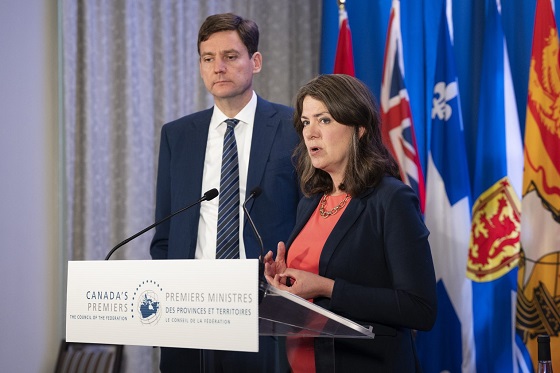
 Alberta13 hours ago
Alberta13 hours agoWest Coast Pipeline MOU: A good first step, but project dead on arrival without Eby’s assent
-

 Energy13 hours ago
Energy13 hours agoPoilievre says West Coast Pipeline MOU is no guarantee
-

 Carbon Tax16 hours ago
Carbon Tax16 hours agoCanadian energy policies undermine a century of North American integration
-
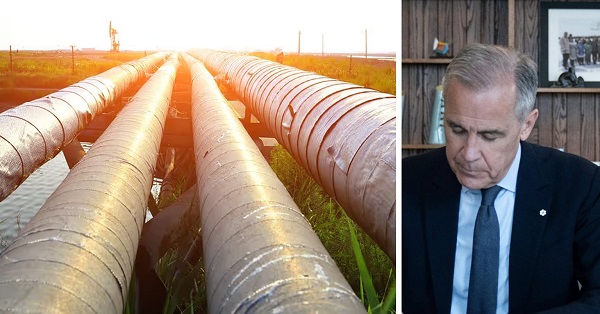
 Energy12 hours ago
Energy12 hours agoWill the New West Coast Pipeline MoU Lead to Results? Almost Certainly Not According to AI
-

 Alberta12 hours ago
Alberta12 hours agoCarney forces Alberta to pay a steep price for the West Coast Pipeline MOU
-

 Alberta16 hours ago
Alberta16 hours agoAlberta and Ottawa ink landmark energy agreement
-

 Crime2 days ago
Crime2 days agoFBI Seizes $13-Million Mercedes Unicorn From Ryan Wedding’s Narco Network





